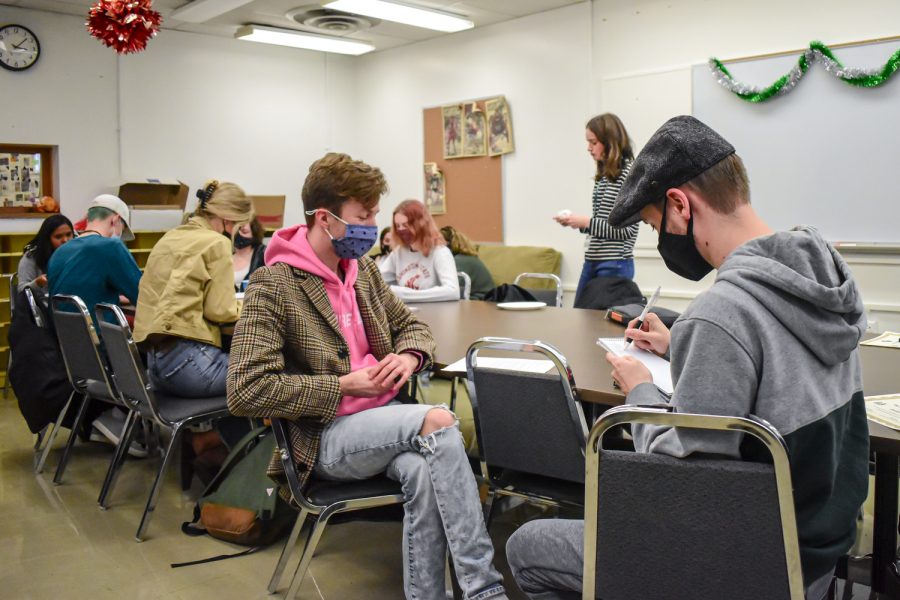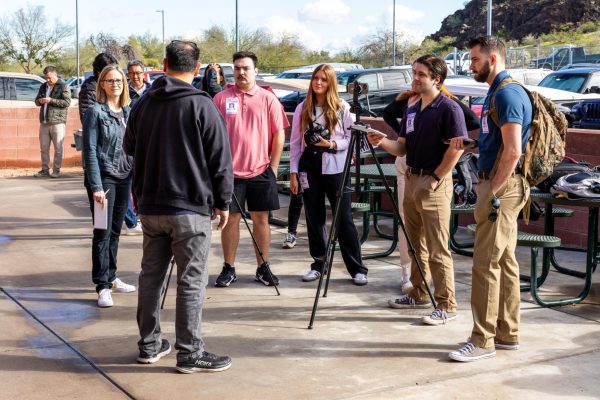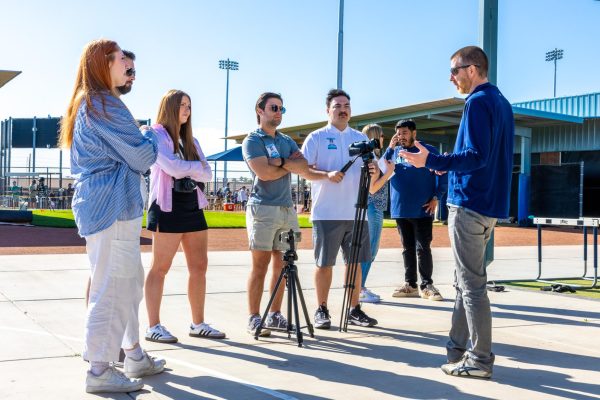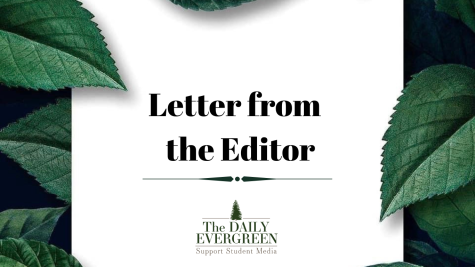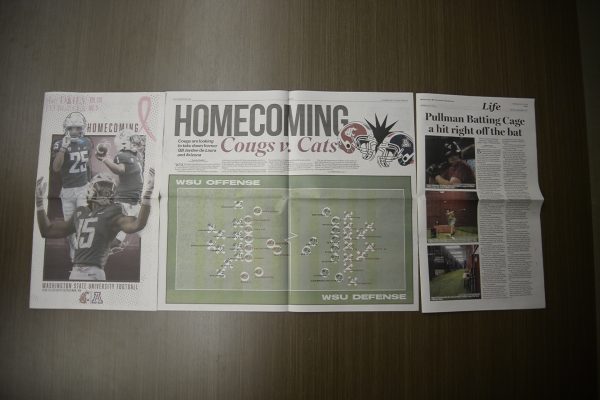Behind the Press: Editors train reporters with interview simulation
New staff members worked with experienced ones to practice interview questions, receive feedback from referees
Evergreen reporter Alex McCollum, left, plays a character during an interview with Evergreen reporter Josiah Pike during a workshop Sunday afternoon in Murrow Hall.
December 6, 2021
The Daily Evergreen news section has seen a lot of changes this semester. Namely, we lost quite a few reporters and hired quite a few others. More than half of our reporting staff — which was already severely limited — is new to the Evergreen this semester.
As news editor, I feel like most of my staff training has been on the fly. I’m sure my reporters can attest that a lot of their training occurs as they are writing their first article, not before.
I can train them all I want before unleashing them on the world, but they learn the most when they are actively doing the job: finding sources, interviewing, writing. As a result, I am always looking for ways to evaluate my reporters’ real-time progress and give them valuable training experiences that imitate what they might experience on their own.
Well, I think I figured out how to do it.
For our final training of the semester, we did an interview simulation. It was like a mini-performance. Everyone had a role, so we had five interviews running simultaneously.
Our five newest reporters played themselves. I gave them a short prompt telling them the topic of their interview, and that was about it. Essentially, they went in blind, only knowing that they would have to create a story out of the information their source gave them. Oftentimes, we get story tips where we don’t have a complete idea of who the source is or what the angle of the story could be, so we have to find out most of the details during the interview. You have to know the right questions to ask to figure out how the puzzle pieces fit together.
Five of our more experienced reporters or editors played a source. I gave them a description with their name, age, occupation and a short narrative about why they were being interviewed. I told them to make up any details I didn’t explicitly give them.
Finally, five editors played the referees. We paid close attention to the questions each reporter asked and gave them feedback as they went.
While it was fun getting to wear a striped shirt and blow a whistle to call “time out” on the interviews, my favorite part of the activity was wandering around the room and hearing my reporters in action. I have done at least one interview with each of my reporters, but I rarely get the chance to hear them working on their own.
I can’t sit in on every interview my reporters do. With 10 reporters interviewing two sources for each of two articles every week, that’s about 40 interviews every week. I have to trust that my reporters will do a good job when I’m not looking over their shoulder — and our readers and sources should be able to trust that as well.
Getting to see my reporters in action was like a proud mom moment for me. They have all grown a lot this semester, even though they were tossed into the deep end. But they are still learning, as am I. I look forward to seeing each of them grow as journalists.
For our sources — don’t hesitate to reach out if you have questions about our reporting process. And for our readers, I hope that as our news reporters learn, they will do a better and better job reporting information that you need to know.
Cheers to the end of the semester, and thanks for reading!


